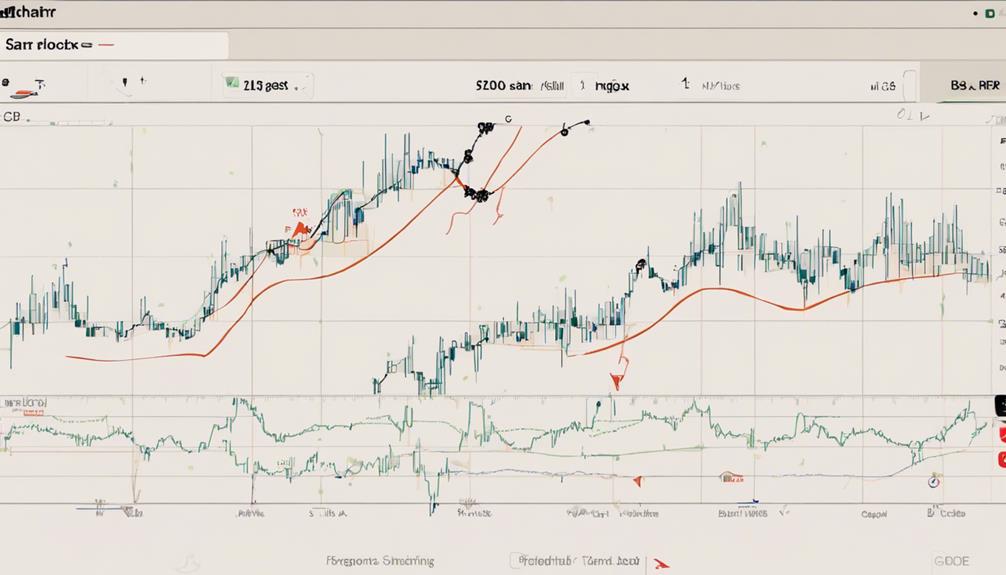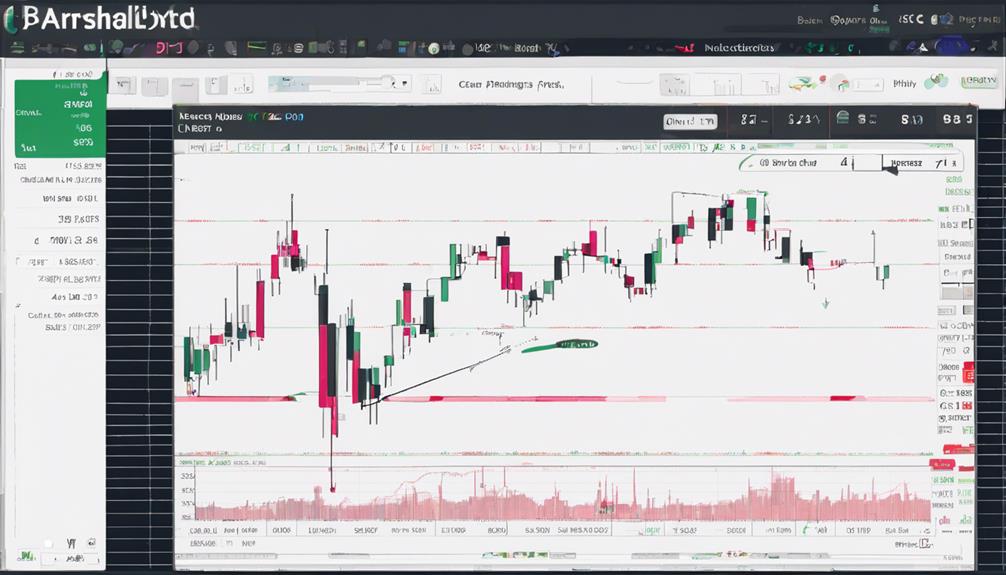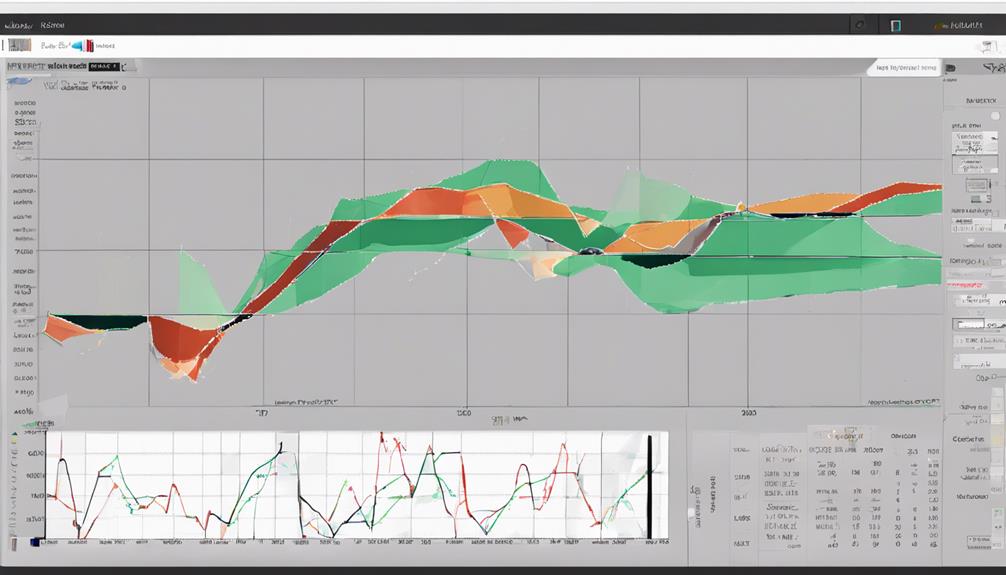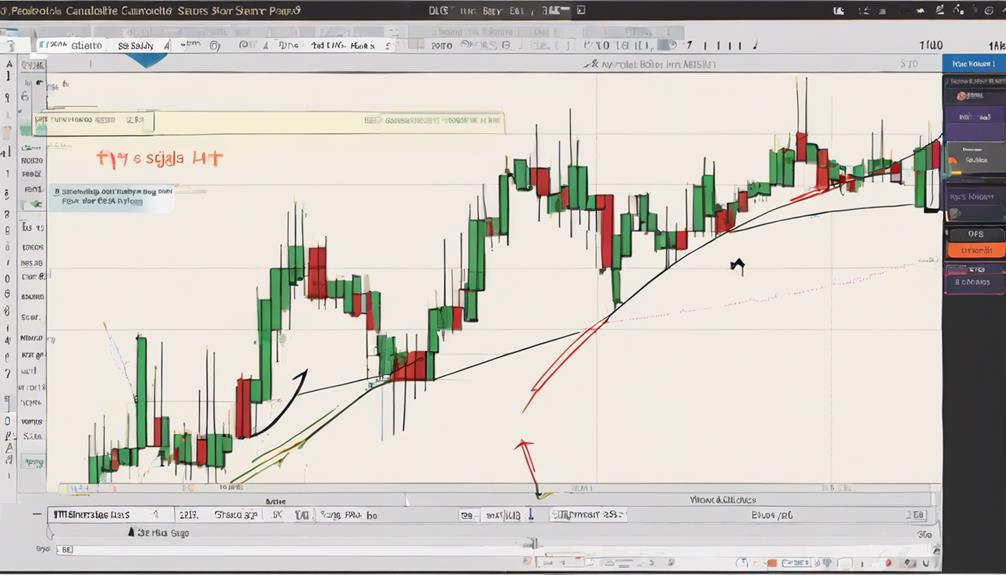In the realm of technical analysis, the Parabolic SAR Indicator stands out as a versatile tool for traders aiming to enhance their decision-making process.
With its unique ability to dynamically adjust to market conditions, this indicator offers valuable insights into potential trend reversals and entry/exit points.
As traders delve deeper into understanding its intricacies, they unlock a world of possibilities in optimizing their trading strategies.
Understanding Parabolic SAR Indicator
Understanding the Parabolic SAR indicator is crucial for traders seeking to effectively gauge potential trend reversals in financial markets.
Developed by J. Welles Wilder Jr., the Parabolic SAR, which stands for Parabolic Stop And Reverse, is a valuable tool in trading. This indicator assists traders in identifying potential changes in trends by displaying dots above or below price bars, representing bullish or bearish trends, respectively.
In trending markets, the Parabolic SAR can be utilized as a trailing stop loss tool. It calculates stop and reverse points based on price highs/lows and an acceleration factor that adjusts over time. By using the Parabolic SAR, traders can determine optimal points to exit trades, manage risk, and potentially capitalize on trend movements.
Understanding how to interpret and apply the Parabolic SAR indicator is essential for traders looking to navigate the complexities of the financial markets effectively.
Calculating Parabolic SAR Signals

When calculating Parabolic SAR signals, the indicator employs specific methodologies for uptrends and downtrends to determine potential trend reversals accurately.
The Parabolic SAR utilizes an Acceleration Factor (AF) that starts at 0.02 and can increase up to 0.2. This AF adjusts the rate at which the SAR moves in response to price changes.
Extreme Point (EP) values are crucial in determining the direction and movement of the SAR. To calculate the Parabolic SAR signals effectively, tracking price movements over at least five periods is essential.
In uptrends, the SAR is initially placed below the price, and as the price continues to rise, the SAR also moves upwards. In downtrends, the SAR is above the price initially and moves downwards as the price declines.
Understanding these calculations in different market conditions is vital for utilizing the Parabolic SAR indicator effectively in trend analysis and trading strategies.
Incorporating Parabolic SAR in Trading

Utilizing the Parabolic SAR indicator in trading allows investors to effectively gauge trend direction and anticipate potential reversals in the market. By providing traders with buy and sell signals based on the positioning of dots relative to price bars, Parabolic SAR assists in decision-making.
One key feature of Parabolic SAR is its ability to aid in setting trailing stop loss orders, enabling traders to lock in profits or limit losses as the price moves. It is important to note that Parabolic SAR is most beneficial in trending markets where it can accurately identify and follow the direction of the trend.
In consolidating markets, the indicator may produce mixed signals due to the lack of a clear trend. To enhance trading strategies, traders often combine Parabolic SAR with other indicators to confirm signals and increase the overall effectiveness of their trading approach.
Exploring Parabolic SAR Settings

Incorporating Parabolic SAR in trading necessitates a nuanced exploration of its settings to optimize signal quality and adapt to varying market conditions and timeframes. When delving into the settings of the Parabolic SAR indicator, traders must consider the following:
- Adjusting Acceleration Factor: The initial acceleration factor (AF) of 0.02 can be modified to enhance sensitivity. By tweaking this parameter, traders can fine-tune the indicator to better suit the dynamics of different timeframes.
- Tailoring to Timeframes: Different timeframes may require specific settings to ensure the Parabolic SAR provides accurate signals. Adapting the indicator to the timeframe being analyzed is crucial for its effectiveness in trend identification.
- Customizing for Market Conditions: Traders can optimize their strategies by adjusting the settings of Parabolic SAR to align with specific market conditions and trading styles. Proper configuration not only enhances signal quality but also aids in determining optimal stop-loss placement.
Implementing Parabolic SAR Strategies

To effectively execute Parabolic SAR strategies, traders must adeptly interpret the dot patterns for trend identification and potential reversals. Long entries are typically considered when the dots are below the price candles, indicating an uptrend, while short entries are favored when the dots are above the candles, signaling a downtrend.
Traders often use the Parabolic SAR as a stop-loss tool to manage risks and determine exit points. Adjusting the stop loss based on risk tolerance can help protect profits and minimize losses.
Additionally, traders can explore Parabolic SAR Divergence to identify potential trend shifts and capitalize on new trading opportunities. Combining the Parabolic SAR with other indicators, such as moving averages or RSI, can provide a more comprehensive analysis and improve the effectiveness of trading strategies.
Can the Parabolic SAR Indicator be Easily Understood by Beginners?
The parabolic SAR indicator basics can be easily understood by beginners with some guidance. This indicator helps to identify potential reversals in the market trend, making it a valuable tool for traders. By learning how to use this tool effectively, beginners can gain more confidence in their trading decisions.
Frequently Asked Questions
Which Indicator Is Best With Parabolic Sar?
When determining the best indicator to pair with Parabolic SAR, consider the specific trading strategy and goals. The Moving Average Convergence Divergence (MACD) offers trend confirmation, while Relative Strength Index (RSI) identifies overbought/oversold conditions effectively.
How Accurate Is the Parabolic SAR Indicator?
The accuracy of the Parabolic SAR indicator is influenced by market conditions and asset volatility. It excels in strong trends but may falter in choppy markets. Combining it with other indicators and backtesting can enhance its reliability for trade signals.
What Timeframe Is Best for Parabolic Sar?
The best timeframe for the Parabolic SAR indicator varies based on trading objectives. Day traders often favor shorter timeframes like 5 or 15 minutes, while swing traders and investors may opt for 1-hour or daily charts. Scalpers might utilize 1-minute charts for rapid trades. Experimentation is key for optimal alignment with trading strategies.
How Profitable Is Parabolic Sar?
Parabolic SAR's profitability hinges on market conditions, risk management, and strategy alignment. It excels in trending markets for capturing strong trends and managing reversals effectively. Combining it with other indicators can enhance profitability, demanding thorough backtesting for success.
Conclusion
In the intricate tapestry of market analysis, the Parabolic SAR Indicator stands as a beacon of guidance for traders. Symbolizing the delicate balance between risk and reward, this tool empowers traders to navigate the turbulent waters of financial markets with confidence and precision.
By incorporating the Parabolic SAR into their trading strategies, traders can unlock the potential for greater profits while effectively managing risks. It serves as a steadfast companion on the journey towards successful trading endeavors.
